2023 Kia Niro Review and Test Drive
As Kia transitions to an all-electric future, the new 2023 Niro offers three electrified flavors.
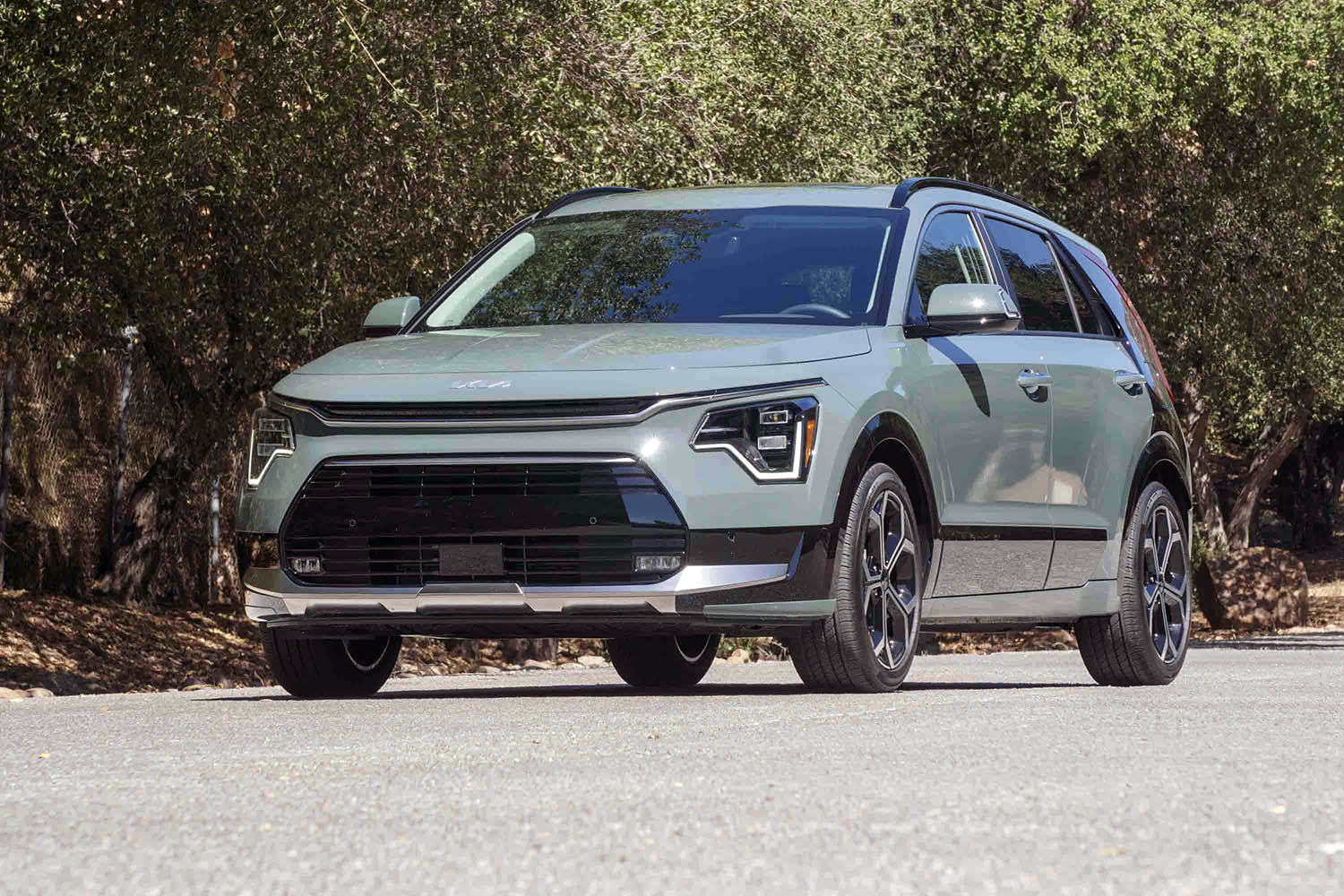 Perry Stern
Perry Stern
Slotted between the Kia Seltos and Kia Sportage in the Kia crossover lineup, the redesigned 2023 Niro is unique in the U.S. market in that it is available as a hybrid (HEV), plug-in hybrid (PHEV), and a battery electric vehicle (EV).
Not only that, but the Niro is also the lowest-priced electrified model Kia offers, and, with its three electrified powertrains, the Niro is integral to Kia's plans for eco-friendly vehicles to make up more than half of its global sales by 2030. The Niro EV is one of 14 electric vehicles that Kia plans to offer globally by 2027.
To experience this newest version of the Niro, Kia invited me to Encinitas, California, where the company covered travel expenses, meals, and lodging and provided me with a 2023 Kia Niro SX Touring hybrid to test drive.
The test vehicle had optional carpeted floor mats and black rear roof pillar trim for a total manufacturer's suggested retail price (MSRP) of $36,435, including the $1,295 destination charge. I also had the opportunity to get behind the wheel of the Niro PHEV and Niro EV. My drive took place on a mix of highway and two-lane back roads north of San Diego.
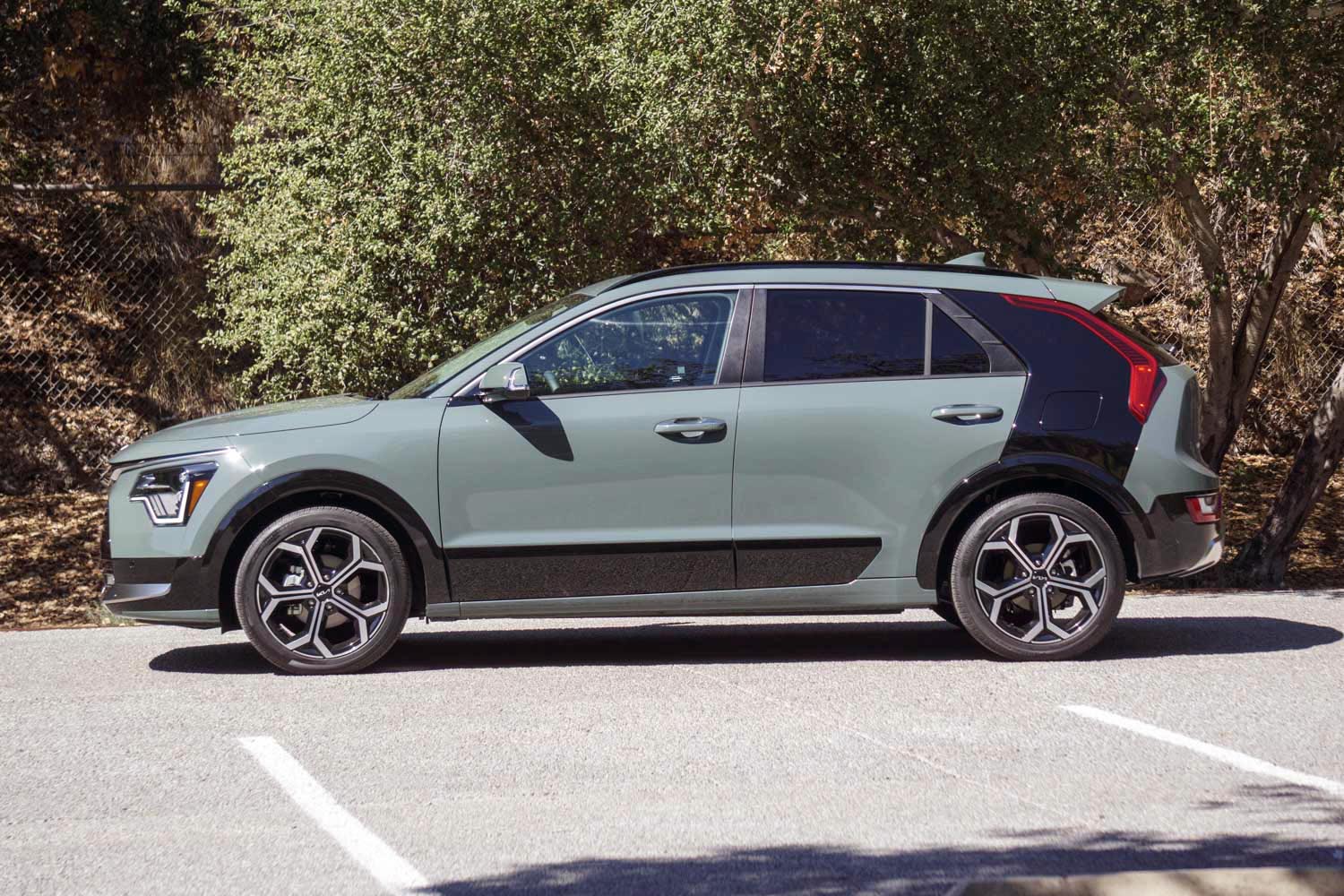 Perry Stern
Perry Stern
2023 Kia Niro Review: The Design
Philosophically, the 2023 Niro's crossover-influenced design and packaging are the same as its predecessor's. Still, the styling is distinctly different, previewed to some degree by the well-received
Also, within the new 2023 Niro lineup, each variant has a slightly different appearance. However, the defining design element across all new Niros is the "Aero Blade" found on the panel behind the rear passenger door. The only other car I've seen with this type of feature is the Audi R8, and that's not bad company to keep.
Not only is the Aero Blade a styling flourish, but it's also functional by improving aerodynamics. For those who may find the contrast-color panel polarizing, Niro buyers can get the Aero Blade painted in the same color as the rest of the vehicle.
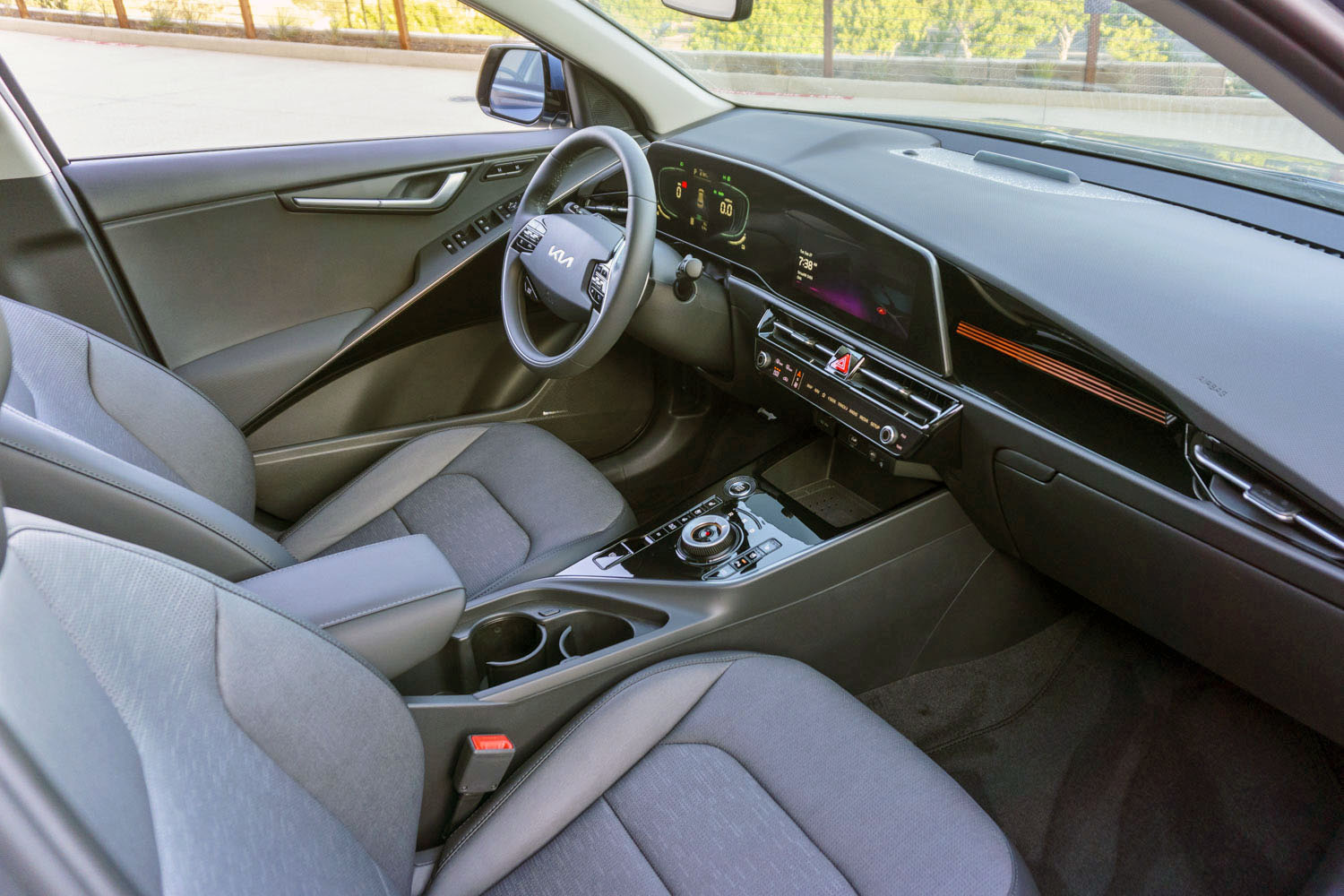 Perry Stern
Perry Stern
Climbing into the 2023 Niro SX Touring for the first time, it felt like I'd gotten into a much more premium vehicle. The display screen that spans two-thirds of the dashboard gives the Niro a high-end vibe, and it houses two 10.25-inch displays — one for instrumentation and one for the infotainment system.
In addition, the Niro EV and PHEV get a simple dial for a gear selector, giving those models a much cleaner look, while the hybrid features a more traditional shift lever in the center console.
At first glance, the front seats look a bit odd, with a head restraint that extends forward from the seatback in a rather unusual design. As a result, they don't look comfortable, but I found the front seats provided good support, and after several hours behind the wheel, I wasn't tired or stiff.
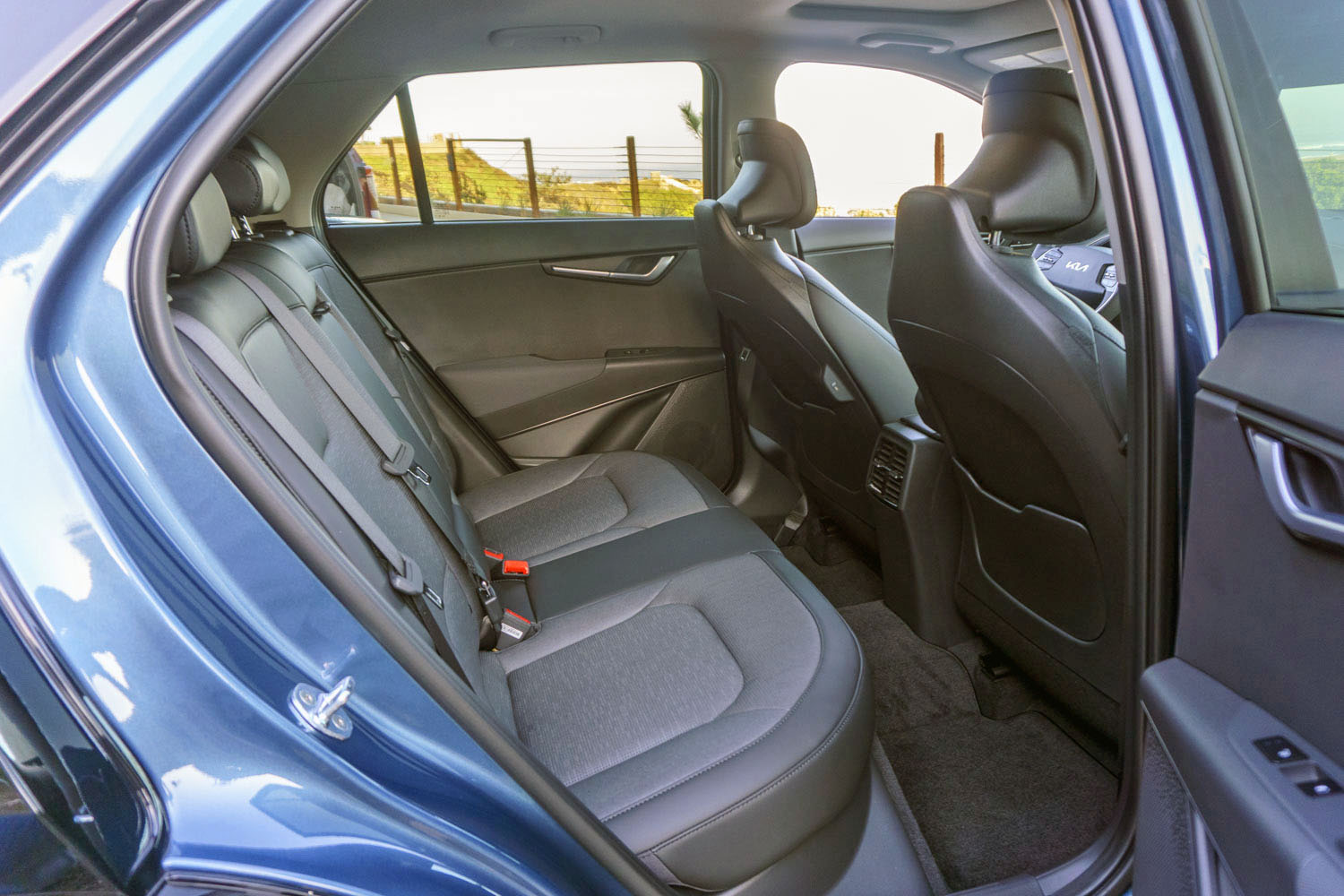 Perry Stern
Perry Stern
In addition, my test vehicle featured a combination of artificial leather and cloth trim, which is stylish and environmentally friendly, in keeping with Kia's push to trim the cabin with sustainable and recyclable materials.
The redesigned Niro is larger than its predecessor in just about every dimension, and much of that growth benefits the rear passengers. With 2.4 inches more legroom in the hybrid than before, the Niro's outboard-aft locations offer good space. I'm 5-foot-8 and I could comfortably sit behind the driver's seat when adjusted to my preferences with room to spare.
The center seating position in the rear seat is a bit tight and is likely best reserved for a child, which isn't surprising in a vehicle this size. The test Niro also had USB-C charging ports installed in the front seatbacks to provide easy access for rear-seat passengers to keep devices charged.
Cargo space also grew with this new Niro, adding to this model's versatility. There's plenty of room for multiple overnight bags, and the second-row seats easily fold flat. In addition, thanks to a 60/40-split design, the Niro allows for transporting longer items without giving up the entire rear seat. Finally, for a bit more storage, the Niro EV adds a small, covered space under the hood in what is often referred to as the "frunk" (front trunk).
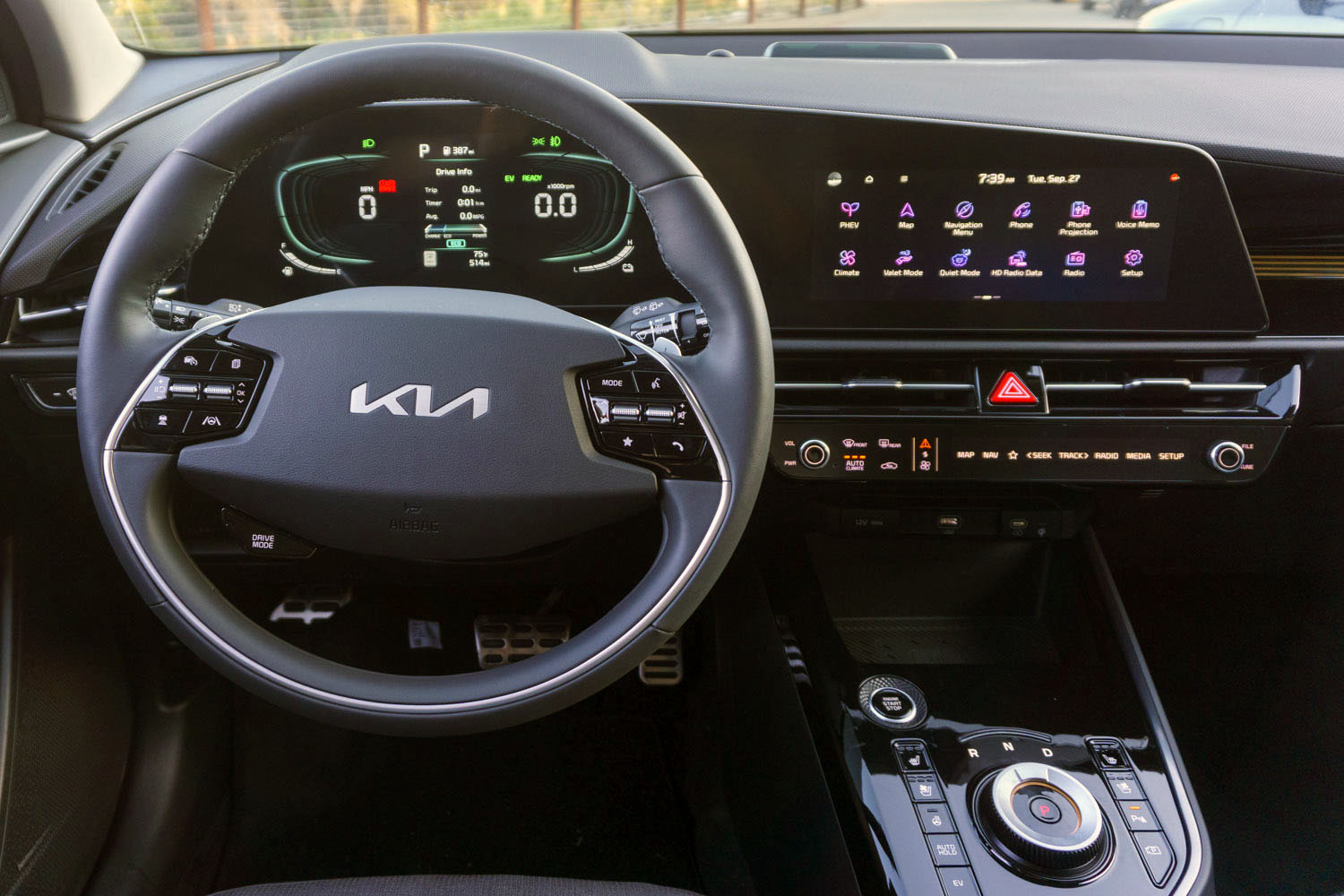 Perry Stern
Perry Stern
2023 Kia Niro Review: The Technology
In my experience, Kia offers one of the better modern infotainment systems. In the new Niro, physical buttons and knobs don't exist, so you control the system using the touchscreen or voice commands.
You can swipe and scroll through content like on a smartphone or tablet computer, and Kia uses large icons that are easy to read and understand. A helpful Home icon consistently shows at the top left of the display for quick access to the main screen, except when using Android Auto or Apple CarPlay.
Pressing the voice button on the steering wheel activates the voice recognition system. I could change the radio station, adjust the cabin temperature, make a phone call, and set up navigation without taking my hands off the steering wheel. I had to repeat myself a few times, but the system works quite well for the most part.
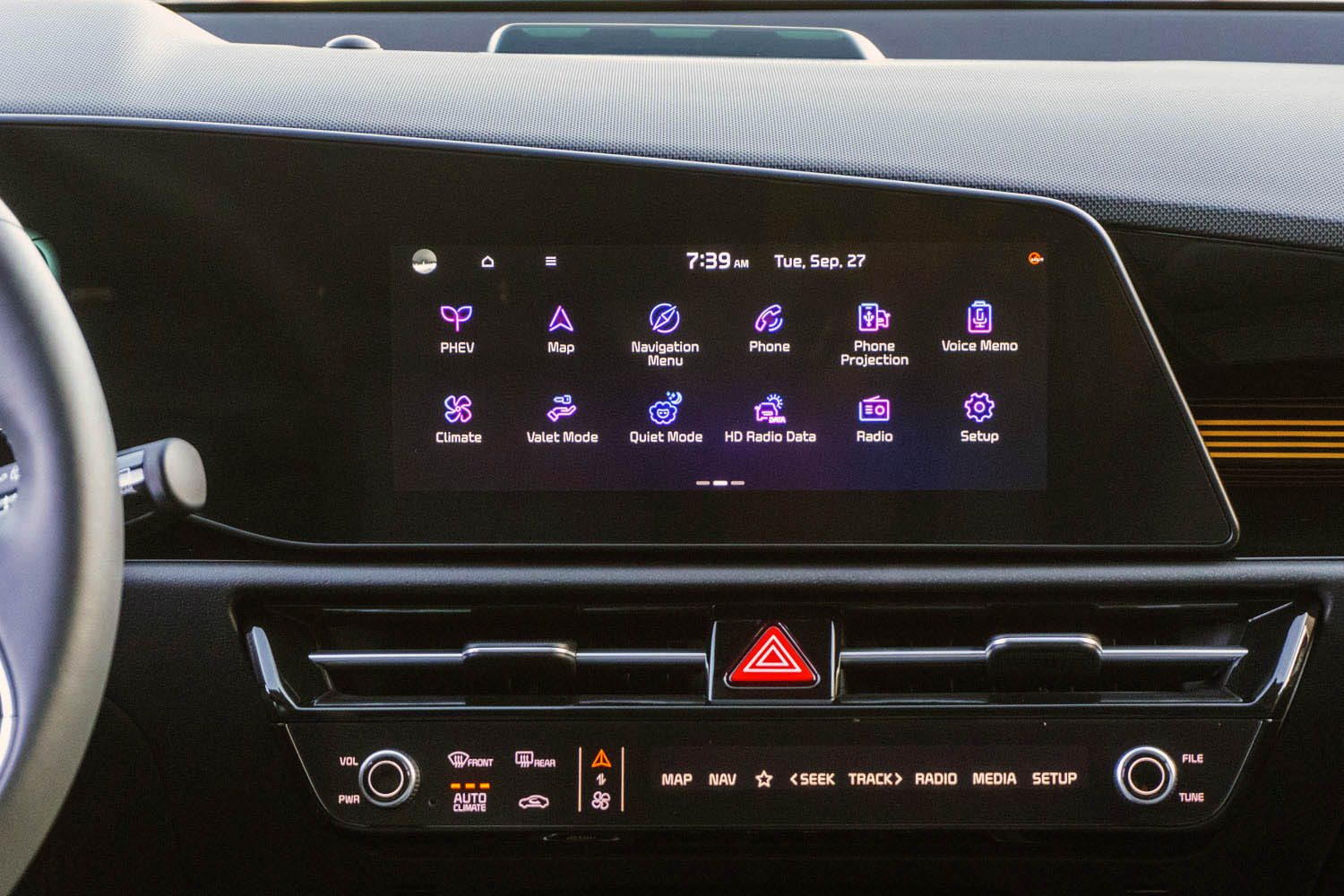 Perry Stern
Perry Stern
Using my Samsung Galaxy S21, I connected to Bluetooth on the first try with easy-to-follow prompts from the Kia infotainment system. Android Auto is now wireless in the Niro, and it loaded quickly, automatically reconnecting every time I got back into the car.
Unfortunately, Android Auto does not use the full screen width. Instead, it uses the left two-thirds of the screen while the right section remains unused. The display is large enough that Android Auto is still fully functional, but I would have liked it to take advantage of the total amount of screen real estate. In addition, the Home icon, pervasive on other screen functions, is not visible when using Android Auto — I had to go into the Android Auto menu to return to Kia's native infotainment.
Kia took a different approach to the climate controls for the Niro, and it wasn't as intuitive as I would have preferred. At first glance, the panel below the center display features dual-zone climate control functions (fan, temperature, and airflow direction) with soft-touch buttons and temperature control knobs, but this panel does double duty.
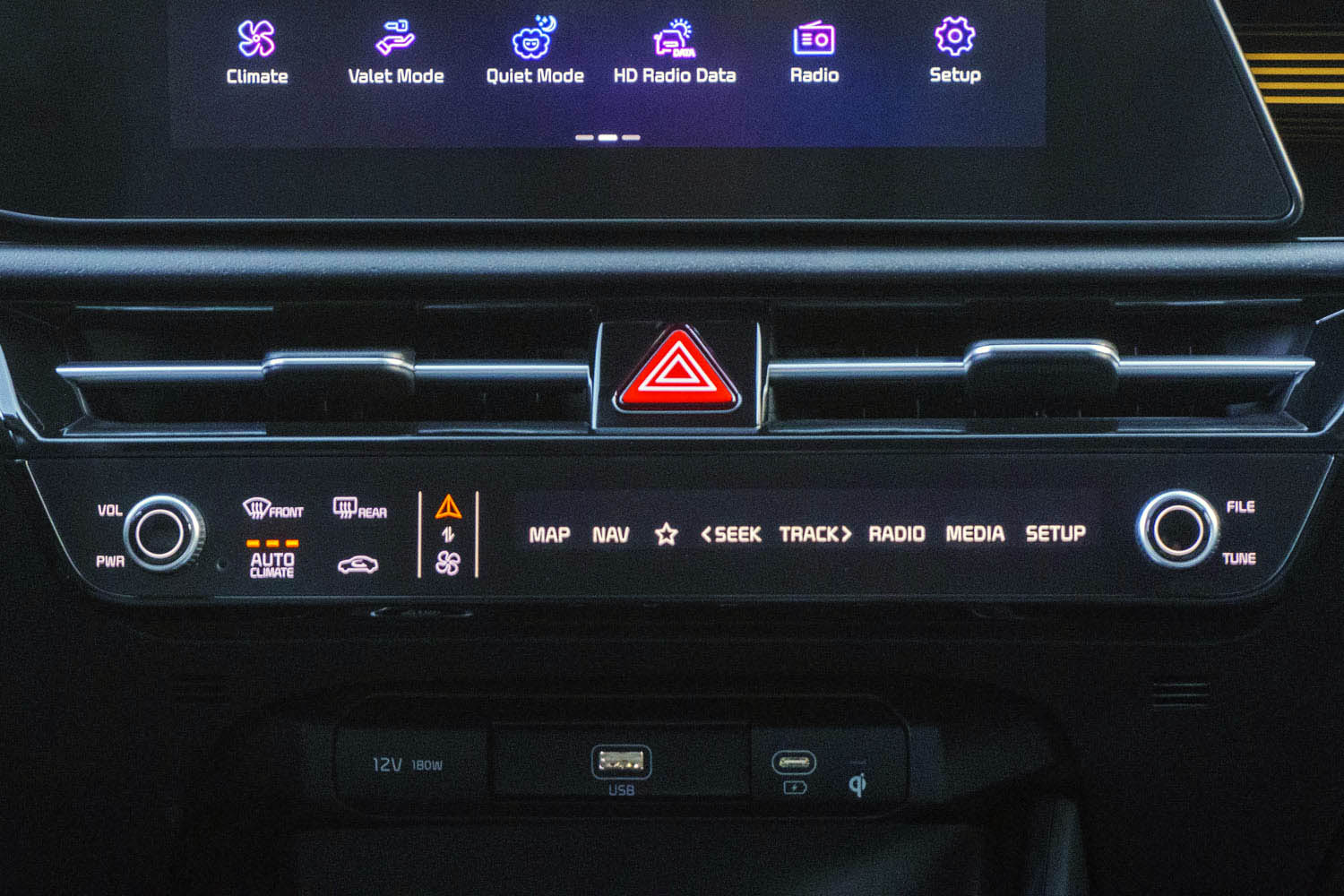 Perry Stern
Perry Stern
With the press of a button, the menu changes from climate to controls for navigation, radio, and media. The knob functions also change. In one setting, they adjust the temperature. In the other, the knobs control volume and tuning.
While this cuts down on cabin clutter, the design can confuse you while driving. At one point, I thought I was turning the volume down when instead I made the cabin colder. Kia does provide an auditory aid, a sound to signal when you're switching between the two sets of controls and issued at different pitches depending on whether you're choosing climate or infotainment settings.
After more time in the Niro, I might be able to make adjustments without looking down based on that sound, but this setup seems overly complicated and distracting.
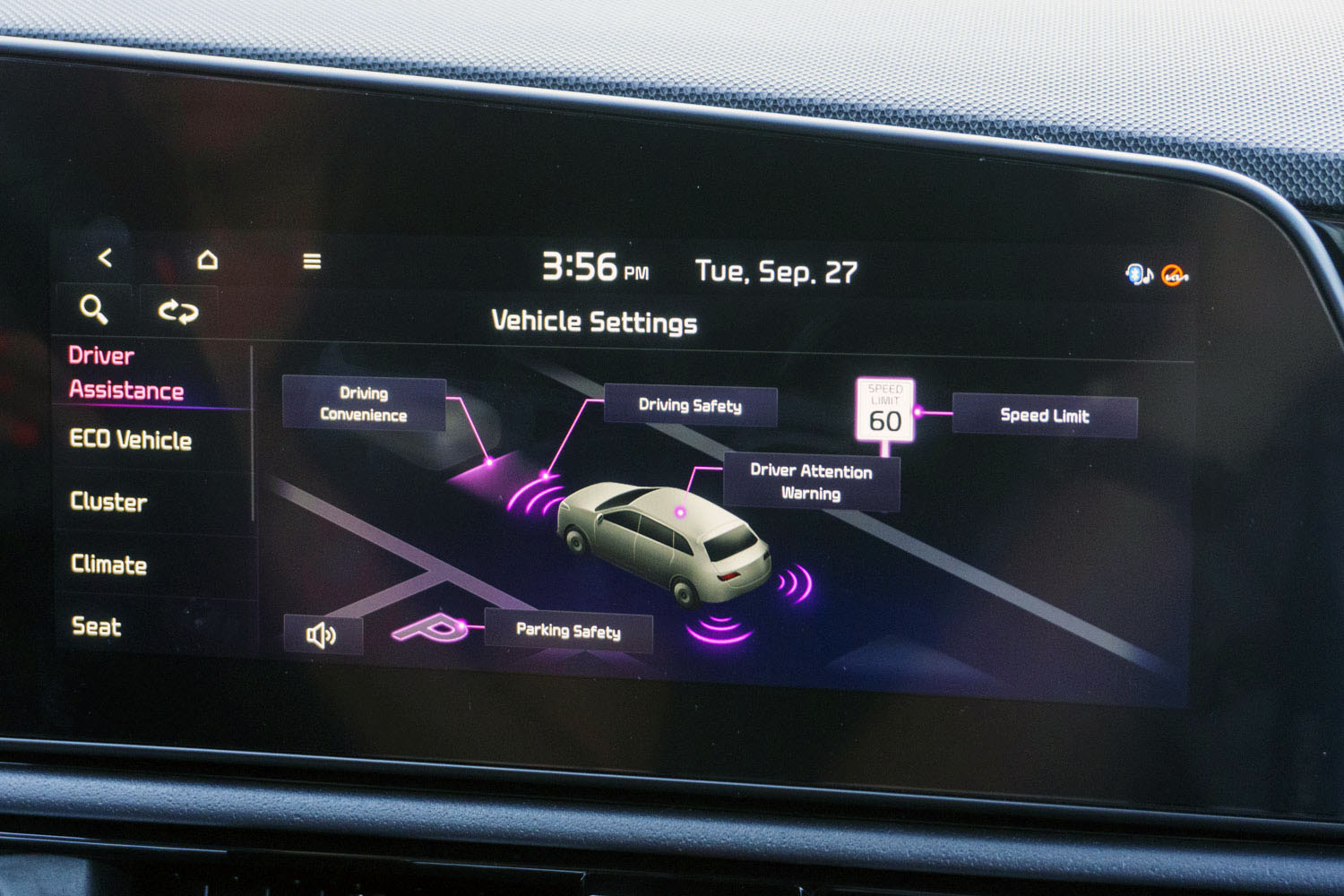 Perry Stern
Perry Stern
The Niro I tested came with all the latest advanced driver assistance systems, most of which are standard on all Niros. I'm happy to say I didn't get a chance to test the automatic emergency braking. However, the new rear cross-traffic alert system worked as expected when attempting to back out of a parking space. As an unseen vehicle approached from the left, the system alerted me to the danger and applied the brakes to prevent a possible crash.
My Niro HEV test vehicle also had adaptive cruise control with stop-and-go functionality. I appreciated that the controls were easily visible and accessible on the steering wheel, allowing adjustment for speed, following distance to the vehicle ahead, and lane-keeping assist.
Unfortunately, light traffic didn't let me test the stop-and-go capability, but this system has worked flawlessly in other Kias I've experienced. Lane-keeping did hold the car in the marked lane without bouncing from one side to the other — an issue with some lane-keeping systems — but I'm not a fan of having the steering move on its own accord because the system still requires the driver's hands to remain on the wheel.
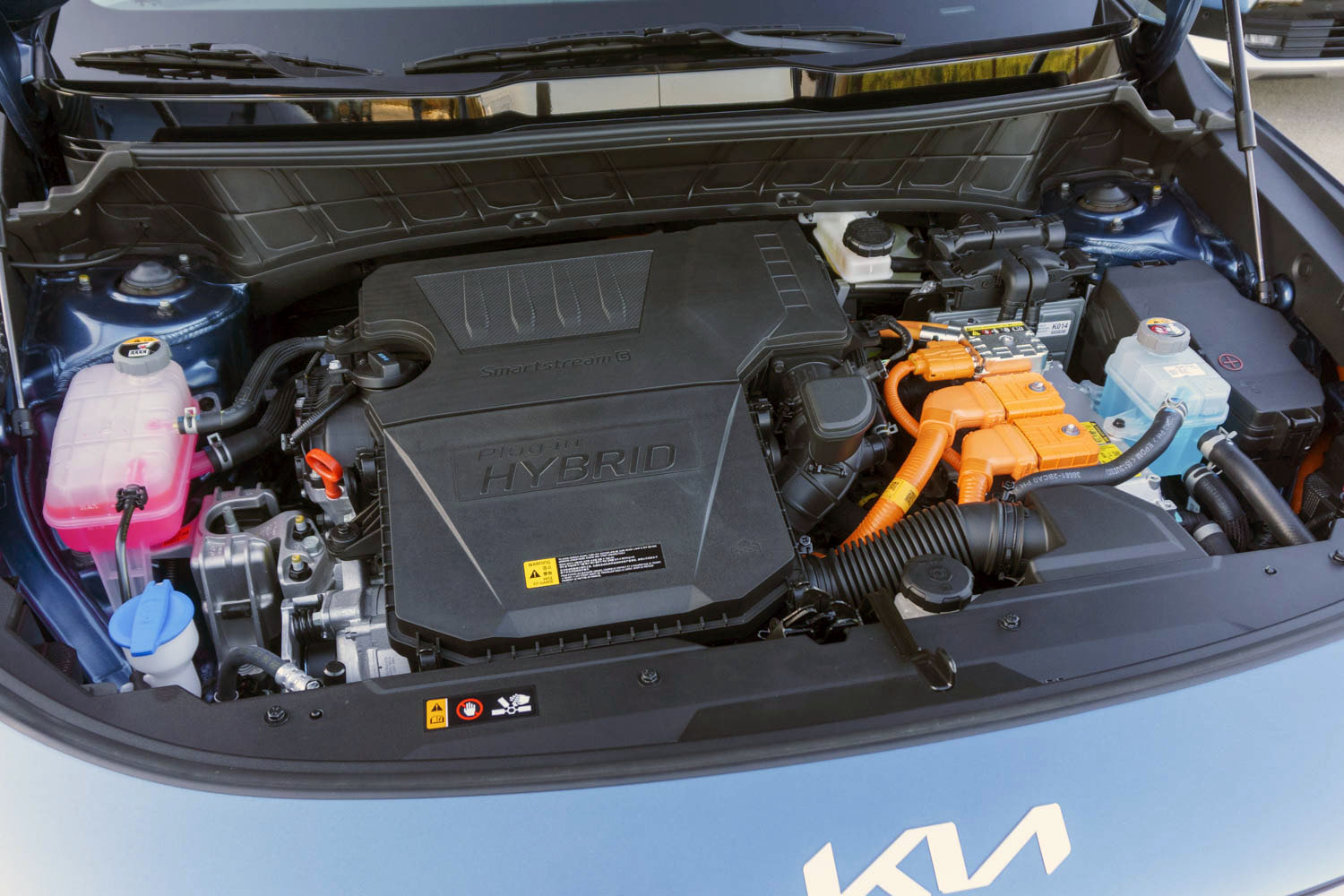 Perry Stern
Perry Stern
2023 Kia Niro Review: The Drive
The Niro hybrid is the lowest-powered of the three Niro varieties, and right from the start, the Kia was noticeably slow to accelerate. According to the automaker, the hybrid takes more than 10 seconds to reach 62 mph, which is not quick. The powertrain's slow response to throttle inputs is also dissatisfying, and the engine gets quite loud at high RPMs.
That racket is typical in many hybrids with a continuously variable transmission (CVT). But the Kia uses a six-speed dual-clutch transmission, so I'm surprised this is an issue in the Niro. That said, in everyday city driving, when it's not necessary to push the Niro hard, the power is more than adequate for getting around.
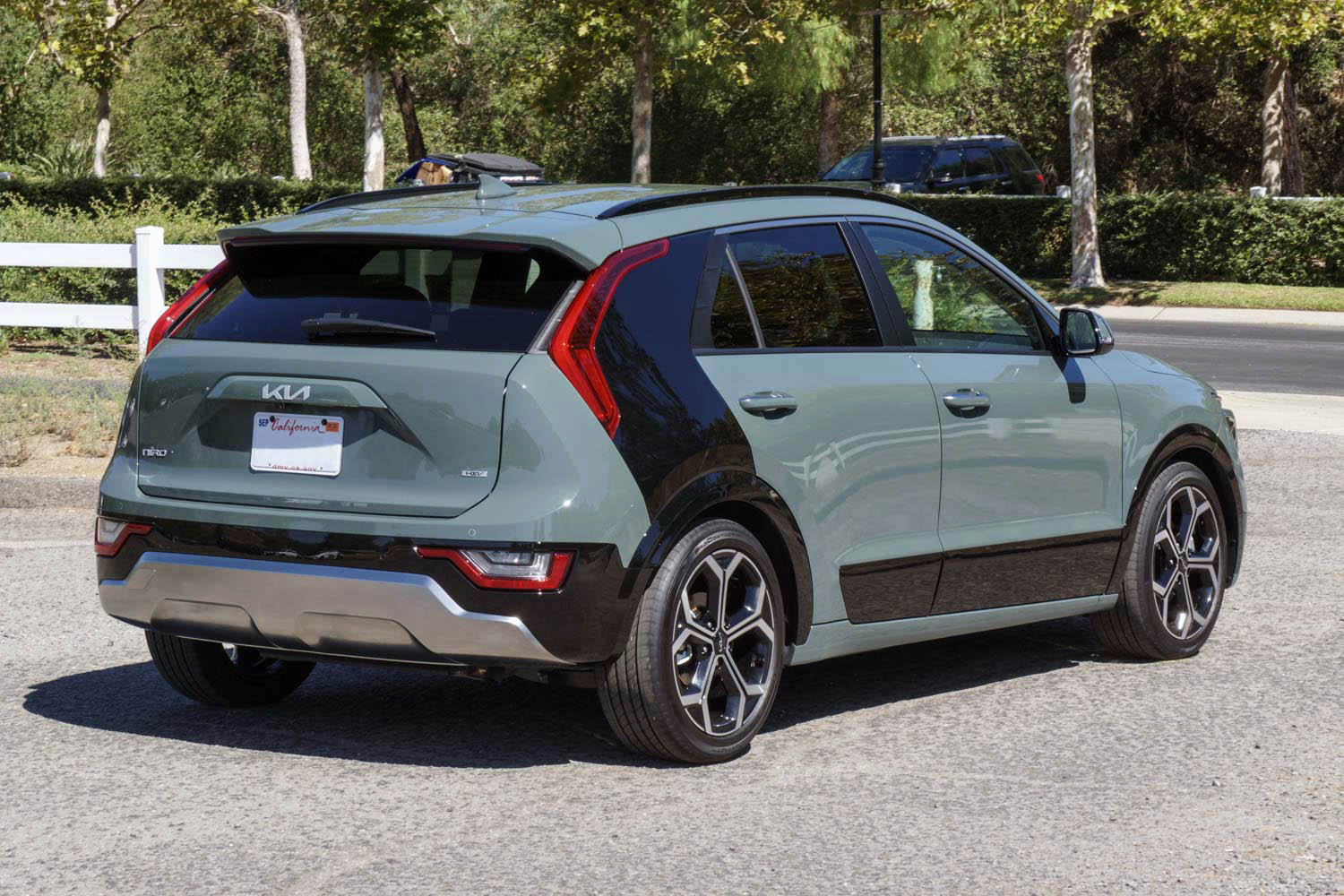 Perry Stern
Perry Stern
It may not be the most powerful vehicle on the road, but that sacrifice pays dividends with impressive fuel economy. During my 60-mile drive in the Niro hybrid, the trip computer reported an average of 54 mpg. And I wasn't hypermiling the Niro. Instead, I drove it like I would any other vehicle.
Aside from the slower acceleration, the Niro HEV is quite nice to drive. Once the Niro is up to speed on the freeway, it cruises smoothly and quietly. I found that at speeds below 75 mph when you're driving on a flat highway or coasting down a hill, the engine will shut off for a quieter ride and improved fuel economy. The engine may be noisy at high revs, but otherwise, it's subtle enough that without looking at the gauges, it's almost impossible to detect when it turns on or off.
On winding two-lane roads, I enjoyed the way the Niro felt. It's no sports car, but the Niro handles well with direct steering response. Overall the small car feels solid, delivering a confident ride, even when the road surfaces are less than stellar.
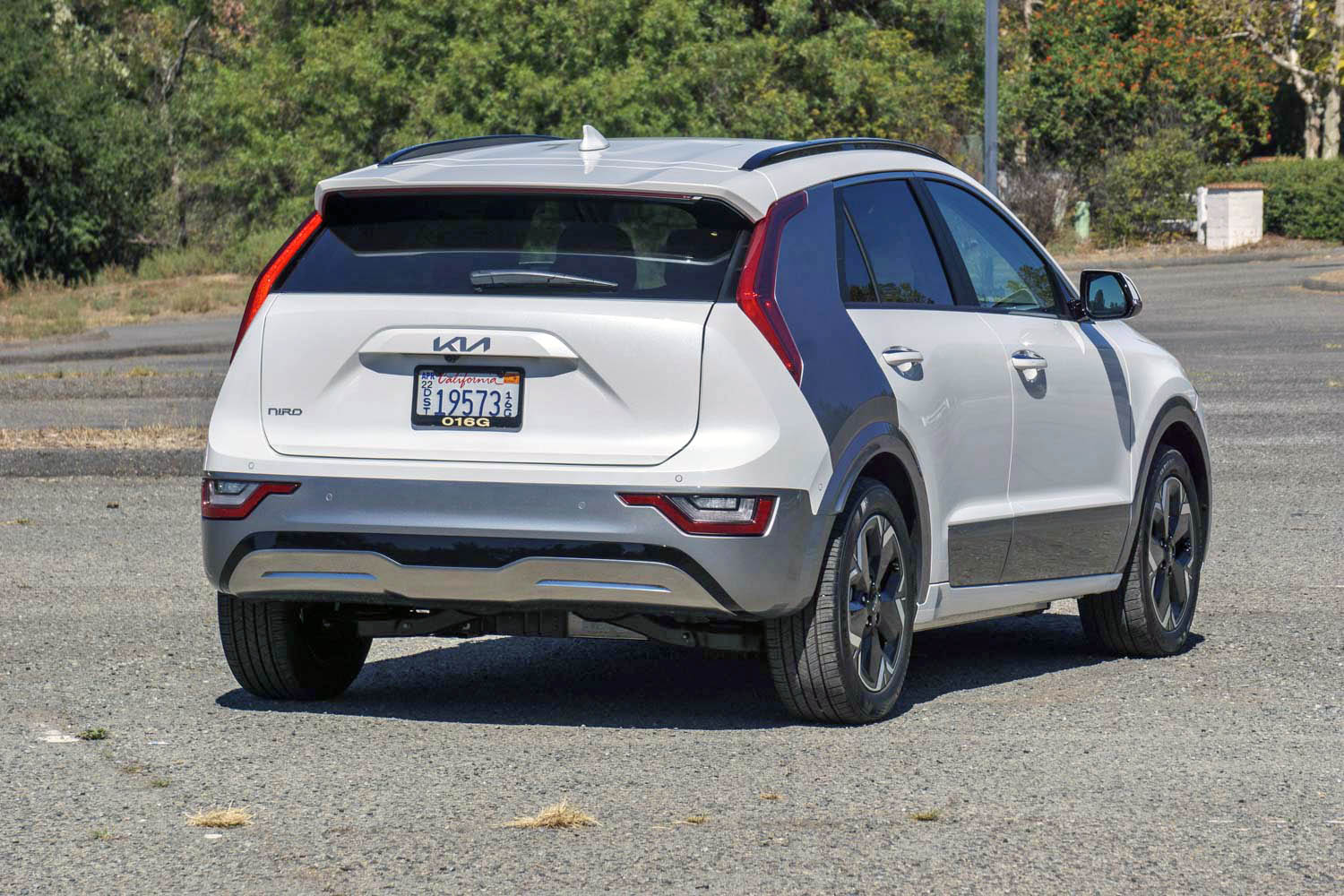 Perry Stern
Perry Stern
I also spent considerable time behind the wheel of the Niro EV, and it quickly became my favorite. As in other electric vehicles, maximum torque is available instantly, making the Niro EV fun to drive with quick acceleration and power that comes on smoothly and quietly.
The Niro EV's one-pedal driving system, called i-pedal, also makes piloting the vehicle more enjoyable. Using the i-pedal is optional; you engage it via paddle shifters on the steering wheel. The i-pedal function allows you to lift your foot off the accelerator to slow the Niro and bring it to a complete stop, maximizing the delivery of reclaimed energy to the battery to extend the Niro EV's overall range.
Speaking of range, when I started driving the Niro EV, the instrumentation showed a 97% battery charge and a range of 256 miles, indicating slightly better numbers than the official EPA ratings. After driving 29 miles, the range showed 228 miles remaining, so it seems the Niro's trip computer is computing correctly.
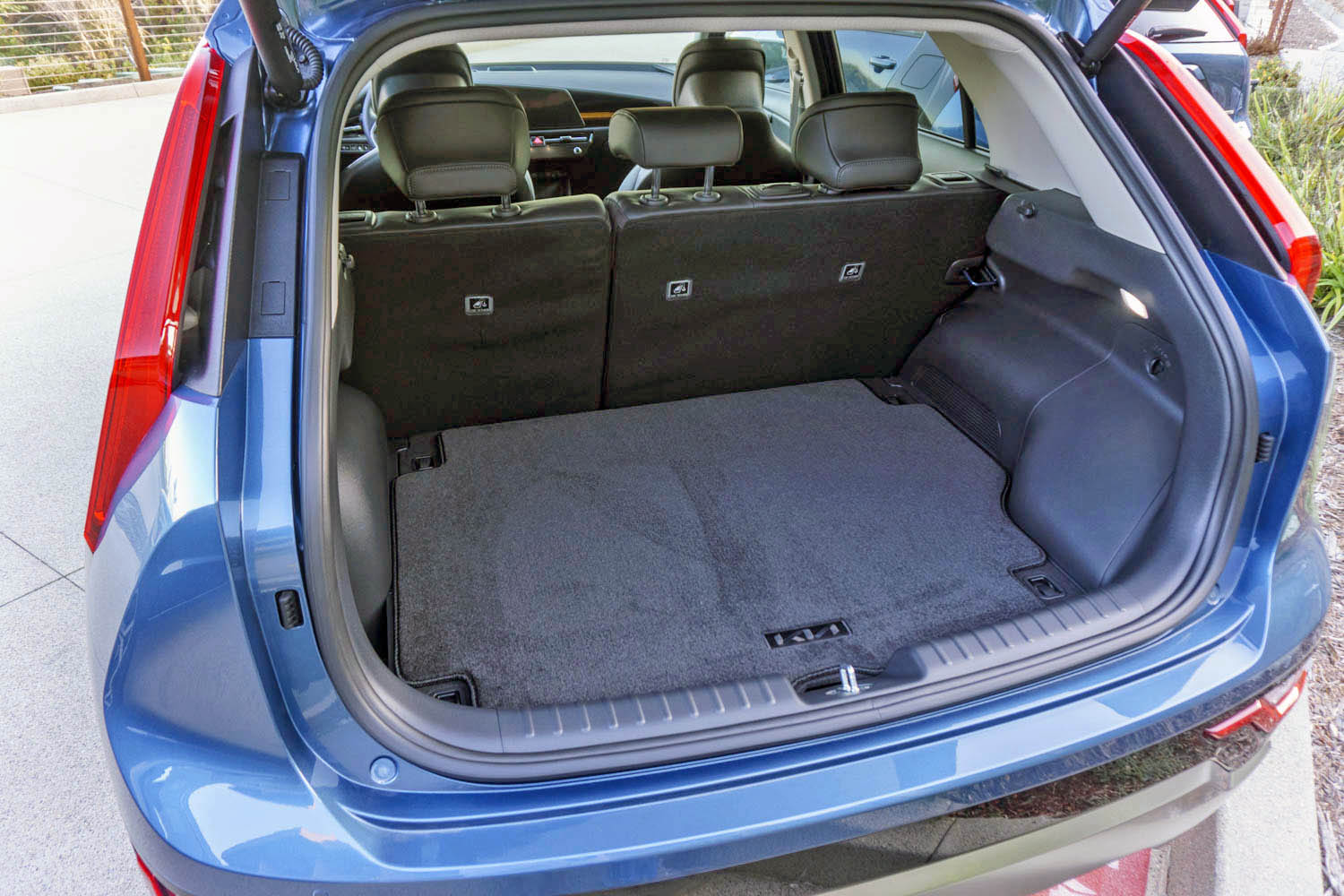 Perry Stern
Perry Stern
While I did prefer driving the Niro EV, it's the Niro PHEV that I think makes the most sense in the long run. According to Kia, the Niro PHEV offers up to 33 miles of electric driving before the gas engine starts, and then the car operates like a traditional hybrid. For most Americans, that will nearly cover a typical commute using only electricity, providing the benefits of driving an EV without the range anxiety.
I also had the opportunity to take a short drive in the Niro PHEV. The PHEV has more power than the HEV, so acceleration is more satisfying, making the car more enjoyable to drive. Otherwise, I found the PHEV handled and felt like the HEV.
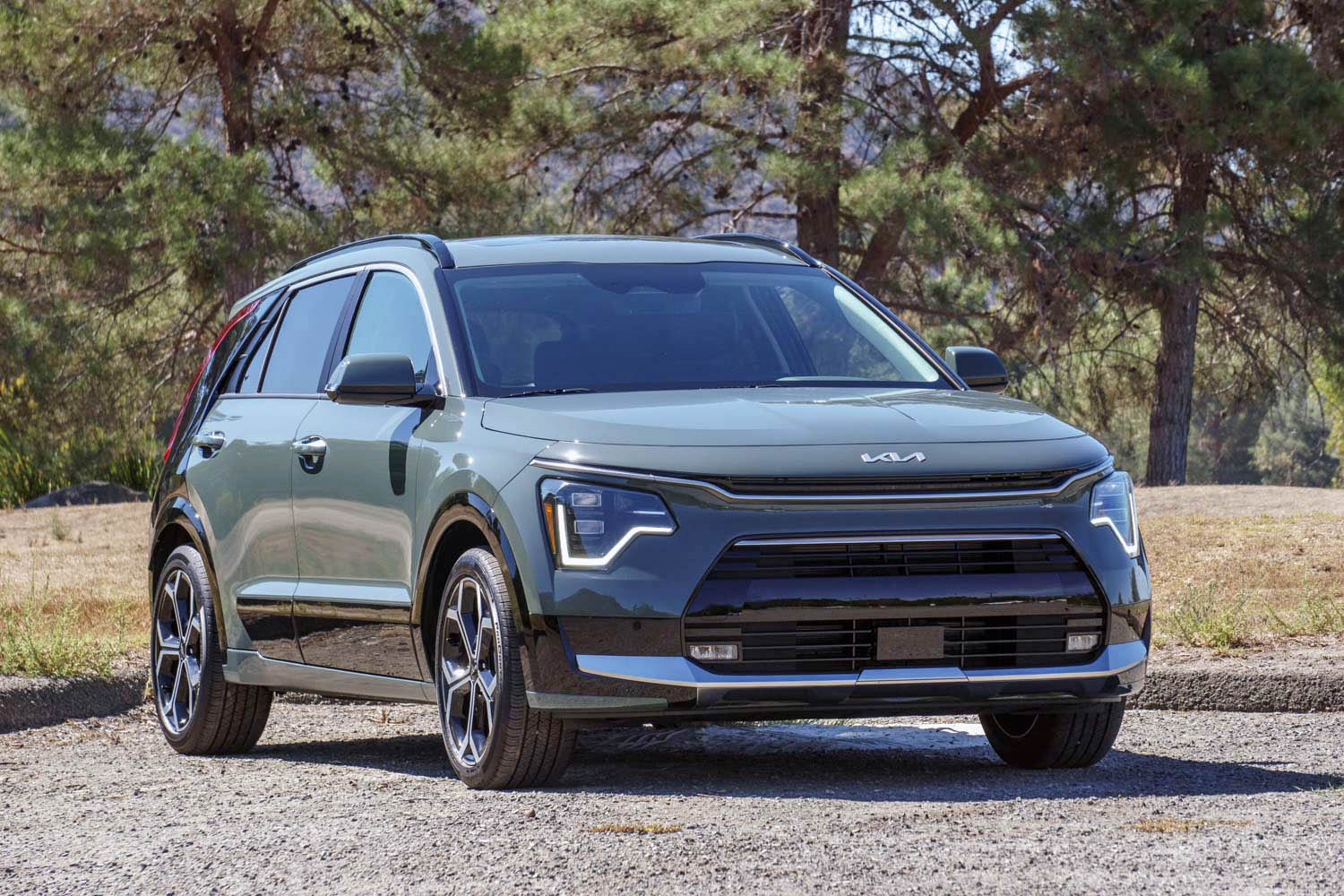 Perry Stern
Perry Stern
Is the 2023 Kia Niro a Good Car?
It may be on the pricier side for a crossover that doesn't offer all-wheel drive, but with quality materials and an attractive, high-tech interior, the new 2023 Kia Niro SX Touring feels like a premium vehicle. Admittedly, the exterior design is a bit polarizing, which may turn some buyers away. Still, the Niro checks many boxes for the new-car shopper with three efficient electrified variants, the utility expected of a small crossover, and the latest advanced driver assistance systems.
Written by humans.
Edited by humans.
 Perry Stern
Perry SternAs a small child, Perry was constantly playing with toy cars and trucks, and that enthusiasm for anything motorized with wheels never faded. After college, he moved to Seattle and began his long automotive career working in an automotive consulting firm, helping customers choose the right vehicle for their needs. In the late 1990s, Perry joined Microsoft to work on CarPoint, part of the new Microsoft Network (MSN). He went on to become editor of the site, remaining on staff for 20 years before venturing out on his own. Today, in addition to his work on Capital One Auto Navigator, he still contributes to MSN, as well as J.D. Power, TrueCar.com, and U.S. News & World Report. Perry lives in the small town of Dexter, Michigan, with his wife and dog, and he still smiles when he sees his 2006 Mazda Miata in the garage.
Related articles
View more related articles